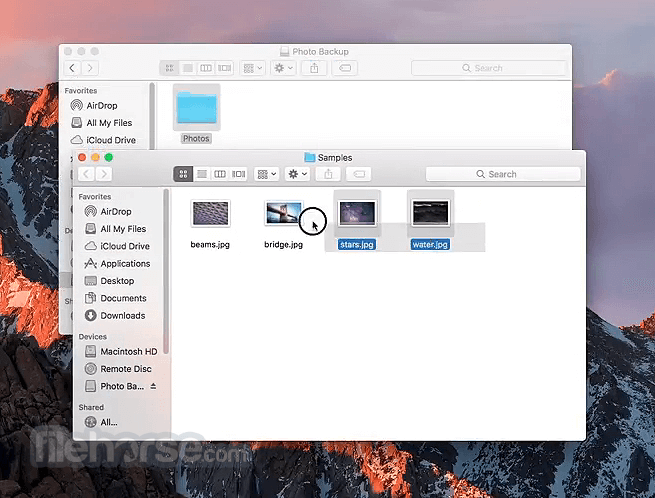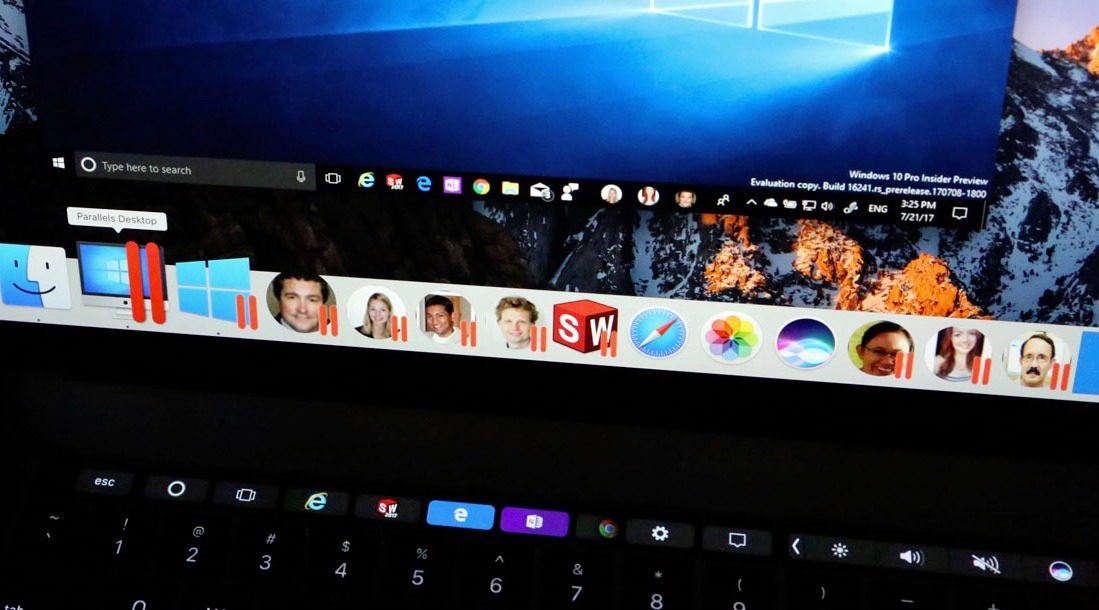If you intend to upgrade your Mac to macOS High Sierra or higher and keep using Parallels Desktop for Mac, we strongly recommend you. Parallels Toolbox for Mac. Parallels Toolbox for Mac makes it easy to perform dozens of essential daily tasks on your Mac—at the low price of a single app. Take screenshots, secure private files with a password, convert Facebook or YouTube videos, and much more. I'm running on Parallels 10, and am thinking to upgrade to Mac OS High Sierra. Anybody know whether the two are compatible? Would like to avoid paying for a new version of Parallels if possible.
It’s that time of year—iPhone pre-order season, and the release of a new macOS. Just like the new iPhone X, this year’s macOS release has IT administrators excited, as well as nervous. This year, there is ample reason to be excited, with the release of Apple File System (APFS). If you have not yet heard about the new file system, Apple’s web site has more detailed information.
Parallels today announced Parallels Desktop 12 for Mac with support for macOS Sierra and the addition of several new features. The company also announced a new standalone app called Parallels. Parallels Remote Application Server; Parallels Desktop for Mac Business Edition; Parallels Desktop for Mac Pro Edition; Parallels Mac Management for SCCM; Parallels Desktop for Mac; Parallels Toolbox for Mac & Windows; Parallels Access.
Parallels Mac Management for Microsoft SCCM customers have been asking about compatibility with APFS since it was first rumored. As the API keeps evolving, it was uncertain what the final release would look like, but now we are able to answer questions and share some great news.
Parallels Mac Management v6.1
In early October, we plan to release Parallels Mac Management v6.1. This release will officially support macOS High Sierra 10.13. You can expect Parallels Mac Management to work seamlessly with macOS High Sierra, with just a few limitations:
- In rare cases, a Mac may not be able to NetBoot a macOS image; you may see a blank screen at the end of the boot sequence. We are investigating the issue and will update users with more information as soon as it is available.
- The Format and Partition Disk task sequence step has limited support for APFS.
- The following OSD scenarios are supported by Parallels Mac Management v6.1:
- Apply macOS High Sierra 10.13 to a Mac that has already upgraded to 10.13, without re-partitioning
- Format and partition, then apply macOS High Sierra 10.13 with implicit conversion to APFS
Parallels Mac Management Releases Prior to v6.1
Releases prior to v6.1 are not officially supported on macOS High Sierra. If you need to manage macOS High Sierra devices you must upgrade to Parallels Mac Management 6.1 (or newer). At the time of writing, we are aware of the following compatibility issues with macOS High Sierra:
- Not able to create a boot image from a Mac with macOS High Sierra installed
- Not able to create a system image from an APFS volume
- No APFS support in the Format and Partition Disk task sequence step
- Not able to enable FileVault2 on an APFS volume
- If during macOS upgrade the encrypted disk is convert to APFS, the recovery key will not be shown in the Mac device resource properties (the key will not be lost, only not shown)
- Not able to enroll a Mac with macOS High Sierra installed in the Apple Device Enrollment Program (DEP)
Download Parallels Mac Management v6.1
Parallels Mac Management v6.1 will be available in early October. If you have an active license you can visit the Parallels site to download the most current version.
Feedback
If you would like to suggest a feature, please post your ideas in the Feature Suggestions Forum.
If you’re willing to hands-on macOS Mojave and give it a try before you really install on your Mac, here’s how to do that with a quick set up Mojave on a virtual machine. Here is How to Install macOS Mojave on Parallels Desktop.

This is a clever idea that if for some reasons you might not want to install on your actual computer. More importantly, there are tons of reasons why you would not install this on your working computer. One of the reasons might be conflicting with software or program or not getting installed or perhaps maybe not working with other different things like network, sound, and other. In this case, you might want to install it aside from your original OS.
So, what’s better idea than installing on a virtual machine aside from your operating system. This is probably a mature idea to get around with installing Mojave on a virtual machine (VM) before you actually go through it on your real Mac. The best part is, whether you get failed with installation or not properly work with things, you’ll always have the option to rollback to re-installation or deleting the virtual machine without affecting your OS. Parallels make it handy and quick with installing on a virtual machine that is entirely painless without hassle. So, let’s get started.
- Check this out:Install macOS Mojave on VMware Workstation
What you’ll need
To begin, here are a few things you’ll need to download.
- macOS Mojave Installer file: In order to install and run macOS Mojave as a virtual machine, you’ll need to download macOS Mojave image installer image file from App Store. The downloading may take some while (which is over 6 gig) mostly depends on your internet connection.
Head to App Store on your Mac, and search for macOS Mojave, you’ll get a bunch of results, look for the original one and click on Get.
Download macOS Mojave from App Store
The software update will check and ask for download, click on Download and it will start downloading.

Once the download completed, the installer setup will run to install macOS Mojave, but note down, you won’t have to go through it or Continue with it, just close it.
To close, navigate to the top-left corner and click on Install macOS Mojave and from the list down Quit Install macOS.

Quit Install macOS
Mac Os 10.12 Sierra Download
- Parallels Desktop 14 for Mac: The Parallels makes it surprisingly easy and straightforward that I have used for over years now. The worse thing is, you’ll need to do subscription which is not free. For the pricing, check out the offical website and you’ll find the pricing there.
The installation part is pretty easy, once you’ve downloaded the setup, run it and you’ll have the install option, double click on it and it won’t ask you another question, instead it will open the main window.
Install macOS Mojave on Parallels Desktop
Once you’ve those things, you’ve got ready to go.
The first thing you’ll ever need to do is to fire up Parallels once you’ve installed. At the first line, you may see this page, recommended by Parallels, just click Skip.
Download & Install Windows 10
Next, click on the Install Windows or another OS from a DVD or image file button.
The installation image will automatically figure out macOS Mojave from Applications folder, simply Continue.
Installation images found
Now you’ll be prompted to create a bootable disk image file to install this virtual machine, hit the Continue button and let it do this.
When you’re questioned to where to put this up, choose a place where you want to be, save it and go ahead.
Save As File
Next, choose a name and location, this can be anything, anywhere. At the bottom, mark Customize settings before installation and click Create.
Name & Location
On the configuration, click Hardware and customize the CPU & Memory as the amount of hardware of your system but not less than 1 Processor and 2GB Memory. When you’re done, close this window.
Just Continue.
Virtual Machine Configuration
At this point, create a new user account by entering your details and click Create Account. Or if you’ve one, click on I have a password and you’ll be able to sign in with your existing Parallels Account.
After you’ve signed in, the virtual machine will start booting up automatically and the Apple logo appears and loads as a typical machine does, so this may take a while.
Booting
The first screen appears to choose your language and click Continue.
Here, you need to choose Install macOS and Continue.
macOS Utilities
Continue with the installer.
Agree with the license agreement by clicking on Agree.
License Agreement
Next up, select the virtual hard drive you chose to create for the virtual machine earlier and click Install. Notethat this is not the primary drive where the operating system is installed.
This will now install macOS Mojave on the particular drive and it will take some time.
Installing macOS Mojave
The main installation starts here. So, choose your region and Continue.
And you’re good to proceed with the rest of the installation, there’s nothing much new with installation except choosing between light and dark mode.
Setting Up Your Mac
There you go! You’ve successfully installed macOS Mojave on Parallels entirely running on virtual machine.
Parallels Desktop Mac Os Sierra
And that’s it! There you’ve the macOS Mojave, and you can penetrate into and do everything you want to do.
